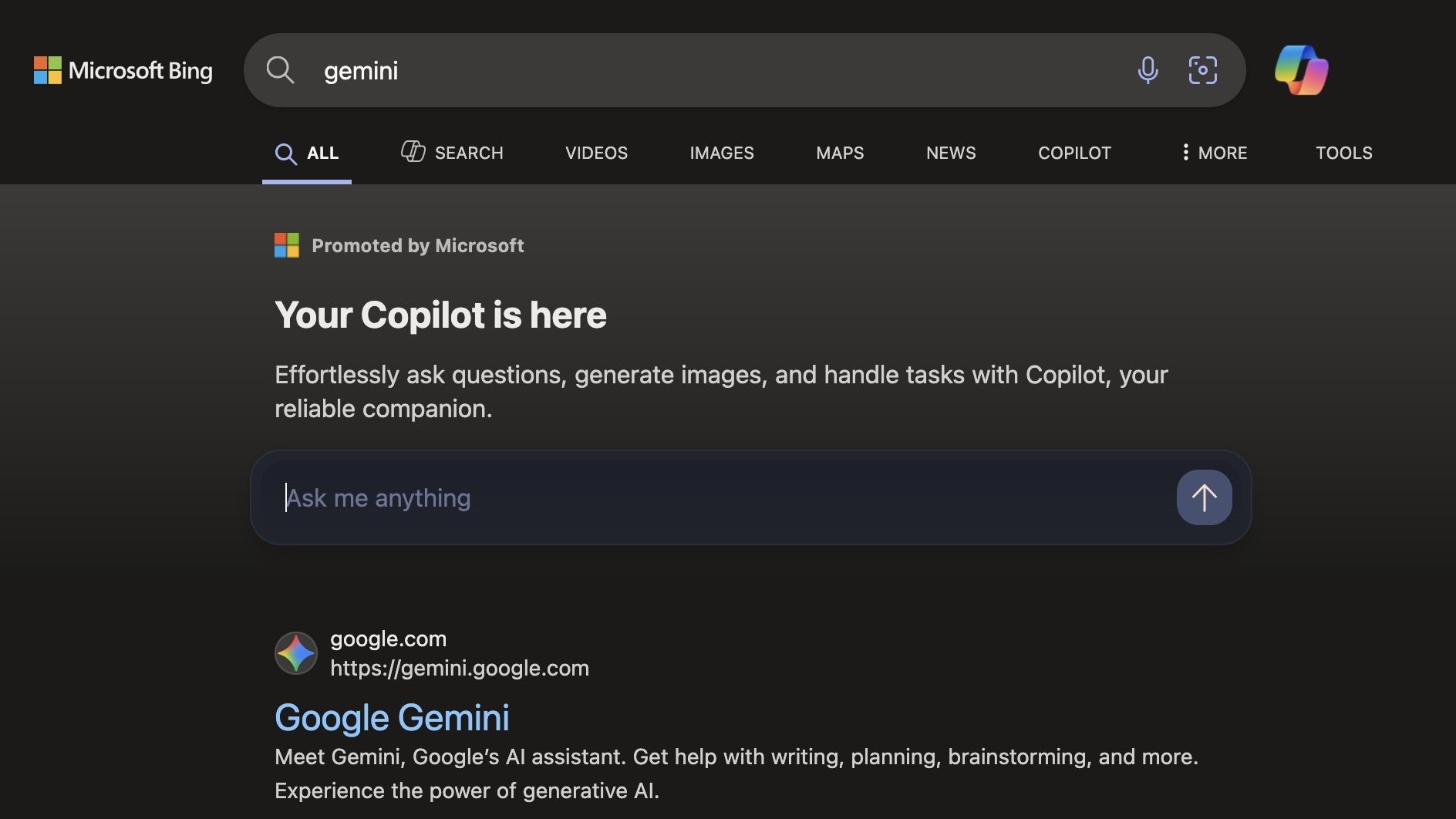There are a ton of AI products out there to choose from today, but it’s pretty clear who the big players are. There’s Google’s Gemini, with its 400 million monthly users, which sounds like a lot, until you learn ChatGPT nets 700 million users every week. That’s really no match for even Microsoft, whose AI assistant Copilot garners a humble 20 million weekly users. That’s a lot of people, mind you, but if you’re Microsoft, you might be thinking of ways to pull in some of that traffic from OpenAI and Google—even if Microsoft is a major partner of OpenAI’s.
That appears to be exactly what Microsoft is doing. If you use Microsoft’s search engine, Bing, you’ll find many different options for interacting with Copilot. You can click the big Copilot button next to the search bar, or deal with the enormous “Copilot Answer” that appears at the top of any given search result, à la AI Overviews. But if you try to use Bing to search for another AI product altogether, like ChatGPT or Gemini, that Copilot Answer is replaced by something else entirely: Copilot itself.
Bing’s Copilot trickery
Give it a try. So long as Microsoft hasn’t updated Bing since I published this piece, a search for one of these AI competitors will result in the following: You’ll see “Promoted by Microsoft: Your Copilot is here,” encouraging you to “effortlessly ask questions, generate images, and handle tasks with Copilot, your reliable companion.” Below that, a large interactive search bar, which reads, “Ask me anything.” Indeed, you can enter a query in this field, his return, and find yourself in a new Copilot window. (Curiously, searching or Anthropic or its AI product, Claude, does not trigger this Copilot experience. Sorry, Anthropic.)
Look, Bing is a Microsoft product, so of course the company would rather direct you to its own services than point you towards the thing you’re actually looking for. In fact, the same thing happens when you search Bing for a non-Microsoft web browser, like Chrome—Bing’s first “result” is instead a plea to “try the latest browser from Microsoft,” with a convenient link to launch Edge. For me, however, this latest tactic blurs the lines a bit between encouragement and trickery. I think if you are searching for one web browser, and Microsoft offers you a link to another, it’s fairly obvious you’re choosing between those two programs. However, I can see how it might be confusing for someone looking for ChatGPT on Bing to see a search bar appear right away, with an encouraging message to get started then and there—especially if they don’t know what Copilot is.
This is becoming a trend, Microsoft
It wouldn’t the first time Microsoft tried to trick people into using their products. At the start of this year, the company spoofed Google’s homepage whenever someone used Bing to search for Google. To the untrained eye, you might think you landed on Google already, as the top half of the window looked very much like the iconic search engine. It was only after looking at the bottom half that it became clear this was still a search result on Bing’s site, not Google’s. How many people were tricked into using Bing when they thought they were using the search engine they were looking for?
Fast forward to August, and I now wonder how many people are going to use Copilot because they thought they had made it to ChatGPT or Gemini. In my humble opinion, if you’re going to build a search engine, it should primarily point people towards the content they’re looking for. Using your search engine as a vehicle to trick people into using your other services is dishonest, and, frankly, sad.
